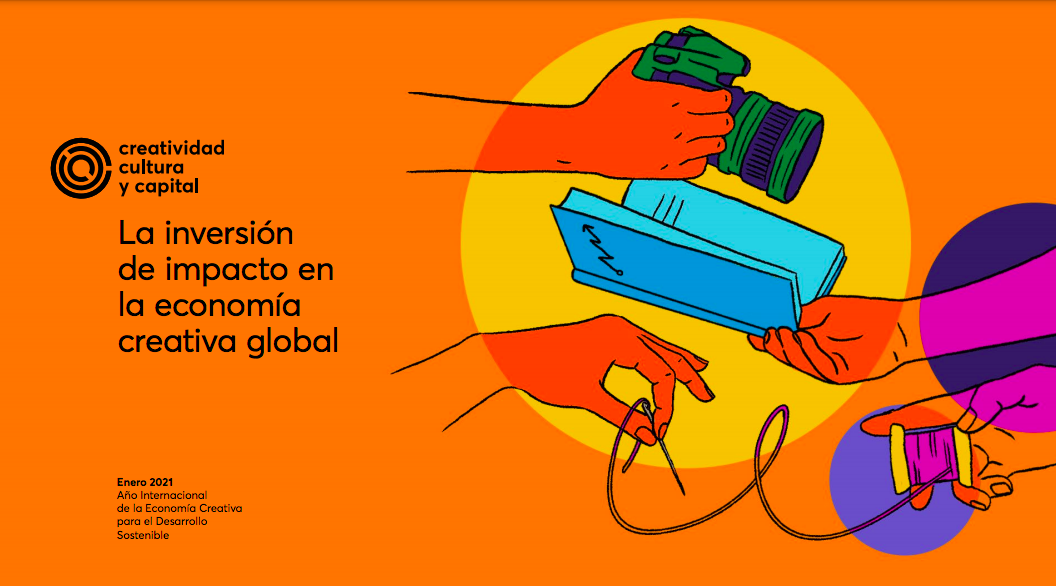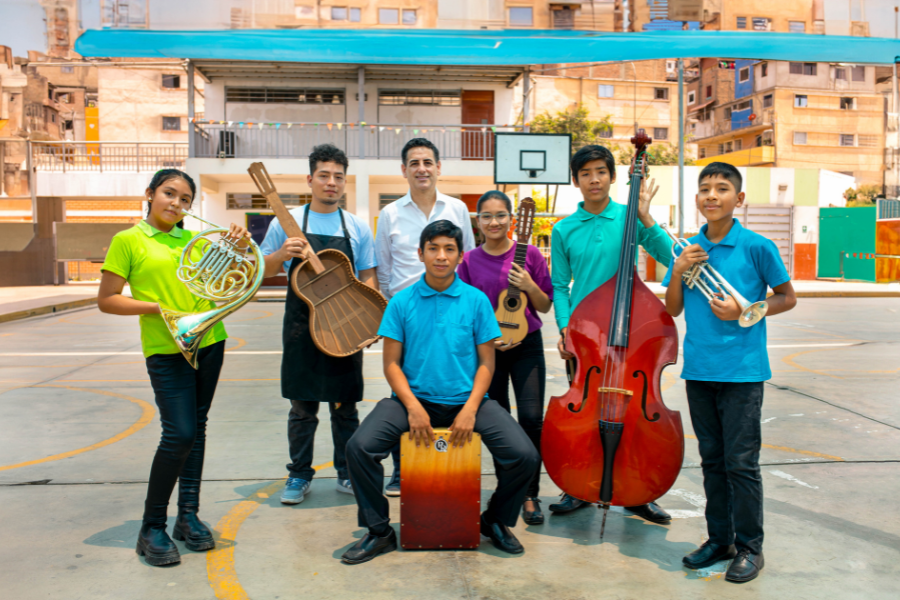Fundación Compromiso and its partners launch “Creativity, Culture and Capital: Impact Investing in the Global Creative Economy” report

In Latin America, Cultural and Creative Industries (CCI) generated 1.9 million jobs in 2013, 7% of total CCI employment in the world, and US $ 124,000 million, 6% of global CCI production .
The publication shares the experiences of Alejandra Martí, executive director of Ópera Latinoamérica with the presentation: Escena Digital; uniting the Latin American artistic community.
Featuring articles by cellist Yo-Yo Ma, global impact investing leader Sir Ronald Cohen, and Royal Shakespeare Company chief digital development officer Sarah Ellis, the report explores how investments in creative economies are vital to innovation within the arts, creativity in particular, and for the economy in general.
Fundación Compromiso announces the publication of a collection of articles from around the world that highlight the need and opportunity for impact investing to safeguard and sustain the creative economy. (To see them click HERE)
The publication was created in collaboration with Nesta, the UK-based innovation foundation, and Upstart Co-Lab, a US-based impact investing opportunity generator. This initiative marks the beginning of the “International Year of the Creative Economy for Sustainable Development” declared by the United Nations, recognizing the creative sector as a key factor for inclusive and sustainable growth in times when the world is recovering from the effects of pandemic.
Impact investing – an investment made with the intention of generating a positive and measurable social and environmental impact, as well as a financial return – has grown in importance in recent years, and today represents $ 31 trillion of global capital. This initiative is the first relevant consideration made regarding the potential opportunities for investors within the creative economy; illustrates how impact capital can help finance a more inclusive and sustainable creative economy.
The report aims to add art and culture as an investment engine. At a time when arts organizations and the creative economy (including fashion, film, music and design) must generate new solutions to support the development of the sector, it is necessary to reflect on the ways to finance projects, creative institutions and cultural ventures, as they have the potential to be highly transformative in terms of income generation, job creation and export earnings.
The essays examine two major themes: Creativity in Action, how art, design, culture, heritage and creativity benefit individuals, communities and the planet, and Connecting Impact Capital, how we impact investing is already transforming and stimulating creative economic activity, generating financial returns as well as a social and environmental impact.
Highlights include:
- Creative activity worldwide is more substantive than is recognized. People appreciate the value of creative activities in their day-to-day lives, but without seeing that they represent an engine of the global economy.
- UNESCO predicts that the creative economy will become 10% of the world economy in the next few years.
- A growing creative economy can create new solutions and opportunities, particularly for those groups that are undervalued in the global context, such as women, youth and people in minority communities.
- The creative economy can also generate real social and environmental results.
As this report shows, the size and considerable value of the creative economy is not yet fully recognized. Before the pandemic, the creative economy represented one of the fastest growing sectors of the world economy; it was expected that in the next few years it would reach 10% of the global economy. This rapid growth is one reason why the United Nations recognizes the potential of the creative economy to be highly transformative in terms of income generation, job creation and export earnings.
It is, for example, the source of 30 million jobs in the formal economy and 300 million jobs in the informal economy. In Latin America according to UNESCO, in 2013 the Cultural and Creative Industries (CCI) generated 1.9 million jobs, 7% of the total employment of CCIs in the world, and US $ 124,000 million, 6% of the global production of the ICCs.
Carolina Biquard, Executive Director, Fundación Compromiso, points out: “Creativity is the new normal. It is the answer to face the present and to tackle the future. The arts and culture have always been man’s response to a search for ways to evolve civilization. Creativity is the way to connect our inspiration and our cultural assets with the practical and economic side of our life. Our young people, especially, will have to learn to live in a creative economy, within a creative system. We hope to be able to design the financial structure that this approach needs”.
Fran Sanderson, Director, Arts & Culture Investments and Programs, Nesta, states: “We firmly believe in the power of the creative economy to produce positive social change that is lasting, and in the enormous opportunity that impact investing has to support and expand this change. This report is the first step in showing it to the world clearly. The sector has achieved staggering goals without a genuine, global support structure. So we are really excited to know where a more intentional effort can lead this movement”.
Laura Callanan, Founding Partner, Upstart Co-Lab, explains: “The creative economy has the ability to captivate, engage, educate and activate more conscientious consumers, such as to reap the benefits of ethical and sustainable supply chains and the entire power of the media to drive positive change. Those interested in promoting a creative economy that is inclusive, equitable and sustainable will find many opportunities to deploy their capitals aligned with values, as the world rebuilds after the COVID-19 pandemic”.
Yo-Yo Ma expresses: “The power of culture is in connection: it connects us with each other and with the world, helping us to know that if it hurts you, it hurts me. Having that intrinsic strength and with due support, culture and creativity will continue to be the most powerful source of human solutions”.
With the launch of this series of articles on a new website, https://www.creativityculturecapital.org/, Fundación Compromiso, Nesta and Upstart Co-Lab invite the contribution with more experiences that can give an account of how the economy Creativity generates social and environmental benefits, and how value-aligned capital supports these efforts and that this resource clearly illustrates the potential benefits of a global impact investment fund for the inclusive creative economy.
To do this, they plan to have 100 articles by the end of 2021, creating a comprehensive source of information on geographies, sectors and experiences, presenting a variety of initiatives with positive impacts through creativity and culture, and the innovative ways in which it is used. capital aligned with securities to finance them.
The website, together with a series of events organized in conjunction with partners such as the United Nations Conference on Trade and Development (UNCTAD), the Global Steering Group for Impact Investment (GSG) and the British Council’s innovative DICE programme, will create a community around this resource to help encourage continued growth in the sector.





